Palomtrina, Winter IC 2404-5

For several days and nights, Arch-Lector Bernado Ugolini had agonised over how to deal with the new and fearful threat. Of course, he had mustered the army immediately the danger was known, and had ordered it to march as soon as possible, for it was undebatable that the enemy could not be allowed to approach the city. They possessed a terror weapon the likes of which, until its power was demonstrated at Campogrotta, was unknown in history …

… except, perhaps in ancient, primeval times when the gods themselves might wield their destructions on the world. This new weapon could obliterate a city, or an army, or both (if the army were within the city).
After deciding he could not risk the destruction of any Reman settlement, nor could he yield to the enemy’s blackmail demands (for that would almost certainly entail further such demands and the eventual ruin of the realm), he marched directly towards the foe. Then, having been advised that to ensconce the army in earthwork defences would simply allow the enemy to bring the terror weapon to bear upon it, he accepted that he must keep moving and face the foe in the field. So it was, that just as they espied the enemy force, the Reman army deployed on the western hills of a valley several leagues east of Palomtrina.

The maestro, Angelo da Leoni, had convinced his holiness Bernado that they could not risk shooting at the terror weapon, for the damage so done might cause a cataclysmic explosion which would annihilate every living thing on the field of battle (as had likely happened at Campogrotta), and so it was that the army contained some rather some unusual and irregular elements, hastily raised, including several dock-worker ogres armed with instruments for pushing the weapon over and wrecking its traction engine …
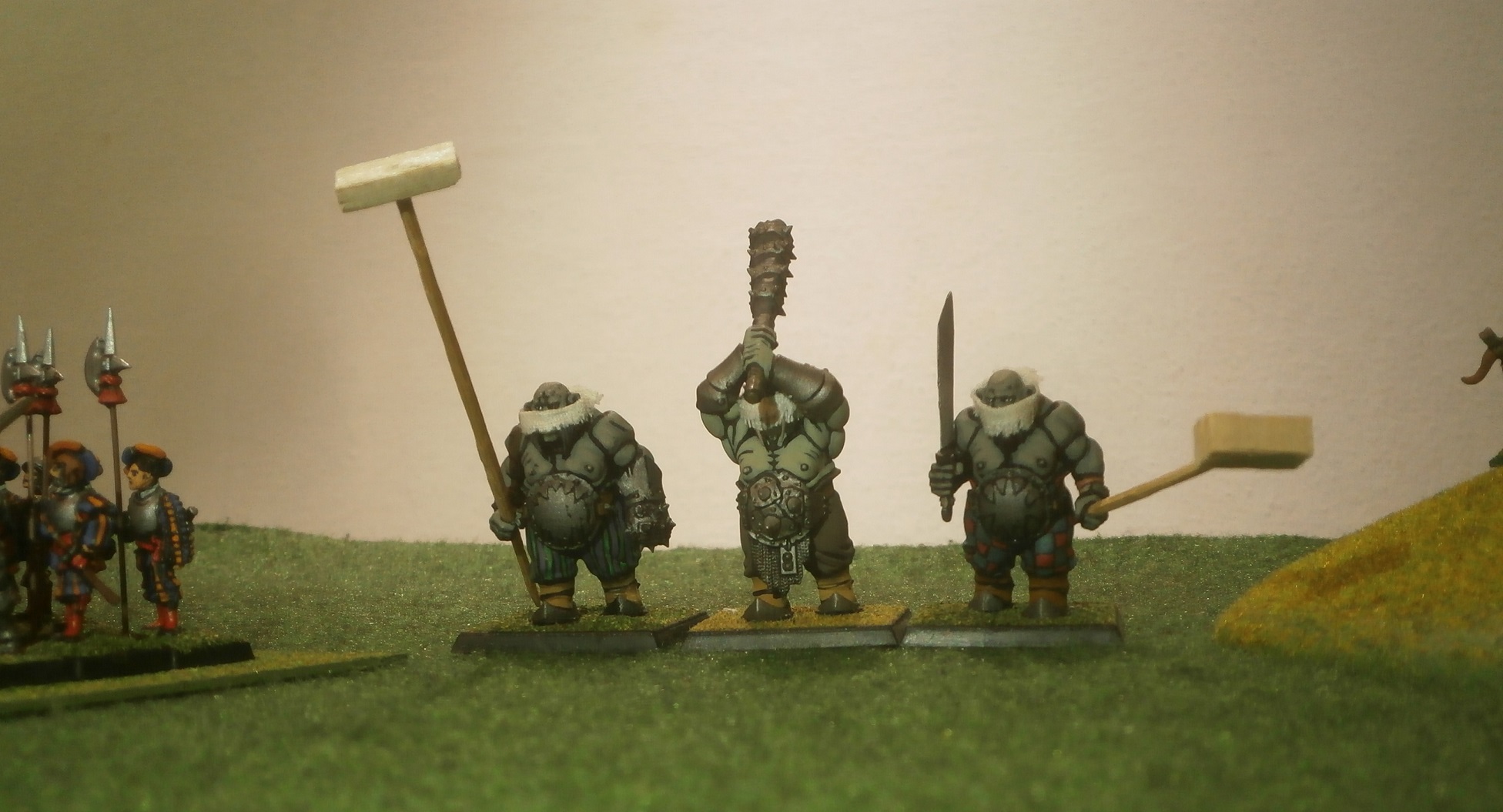
… and a volunteer force of citizen strong-men as a second ‘smashing crew’!

Otherwise, the Reman force was composed of the realm’s marching army, and the standing force of Palomtrina, the latter being a company of well-drilled handgunners clothed in the colours of Remas.

Bernado himself rode with his herald and his secretary, Brother Duarte, and as the army deployed, he positioned himself close to the centre of the lines, directly behind the Palomtrinans.

From there he watched, anxiously, as the foe deployed. He was surprised that they possessed so many engines of war, supposing that this ‘Seer-Lord’ Urlak had a proclivity for such weapons, culminating in the development of the monstrosity which the enemy called its ‘doom-bombard’.

He was also surprised to see how few warriors they had – not that there were not several large regiments, rather that he had expected more such bodies. Perhaps their need to conquer then garrison Ravola and Campogrotta had stripped them of their traditional numbers?

Most of the vermin-warriors were massed upon the enemy’s right, in the form of three, large, regimented bodies.
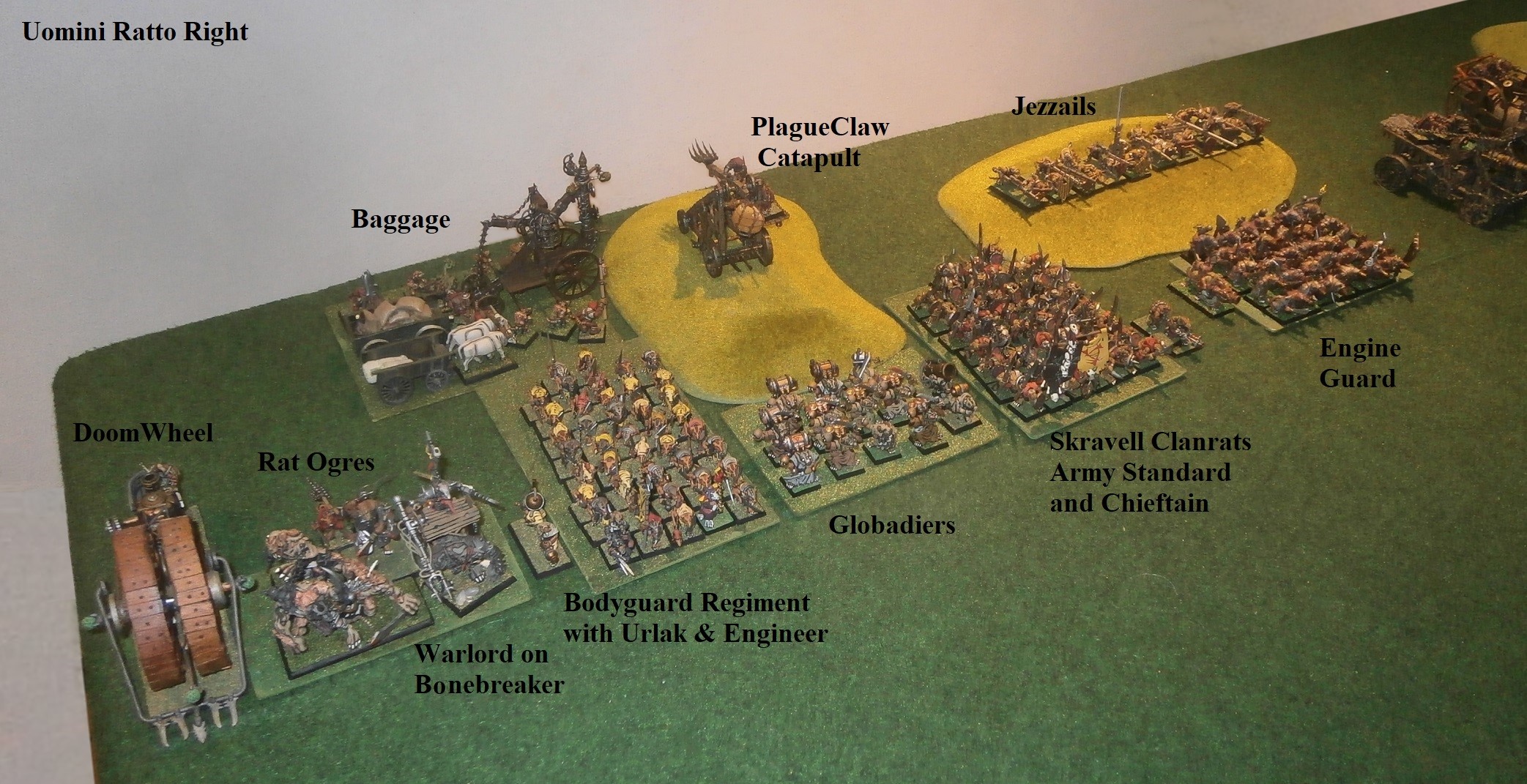
The right-most regiment were clad in yellow rags and iron armour, the front rank of which hosted several unusual looking specimens, one in flowing robes and sporting a bloatedly tall hood, the other wielding a strange profusion of sparkling blades.

To their immediate right was a body of brute-rats, one of which carried a palanquin, upon which rode a banner bearing armoured chieftain.

Out on the far-right flank trundled a giant wheeled engine of considerable complexity.

Bernado wondered whether the maestro had spotted the same, for an engineer such as he would undoubtedly find such a machine as fascinating as it was terrifying, probably more so!
Behind the yellow-liveried regiment was a collection of wagons and oxen, being the enemy’s baggage train. This included a tall, flimsy and rather odd-looking contraption, presumably either a defective weapon or something else entirely.

Bernado now recalled such a thing being mentioned in the reports from his army’s scouts. When he had asked the maestro’s opinion, the genius had simply answered that without looking upon the machine himself he could not offer any suggestions as to its purpose. What with da Leoni tended the cannons on the hill, it was doubtful that he could see it now.
To the yellow regiment’s left were a skirmishing mob of leather robed ratmen, sporting what appeared to be brass kettles of some kind upon their backs, to which their face masks were connected by leather tubes. They carried brass globes in their clawed hands, which Bernado assumed were grenadoes of some kind.

Behind the grenadiers, mounted atop a small hill, was a catapult …

… its similarly robed and hooded crew skittering about on flimsy platforms, preparing it to lob whatever it was it lobbed.

Further towards the enemy’s centre marched the largest enemy regiment, carrying two banners, one a filthy rag adorned with skulls, the other a yellow sheet daubed with the uomini ratto’s most common emblem.

The warriors themselves were garbed in red and carried heavy bladed spears. Perhaps imagined, Bernado seemed to hear their chittering as they dressed their ranks and files.

Closer still to the centre came the third large body of ratmen, each and every one of whom was entirely enveloped in robes and masks of leather.

Their presence confused Bernado, for although three massive engines – warp-lightning cannons – trundled beside them, the doom-bombard was not one of them. By their garb he presumed these warriors to be what the scouts had called the engine guard, always reported to be escorting the terror weapon. Yet here they marched as a fighting regiment in the line, their heavy robes surely now an unnecessary encumbrance?
Behind them, arrayed upon a central hill, was a line of extraordinarily long-barrelled handgunners, two to each piece, with triangular palisades set in front of each of them, dually employed as rests.
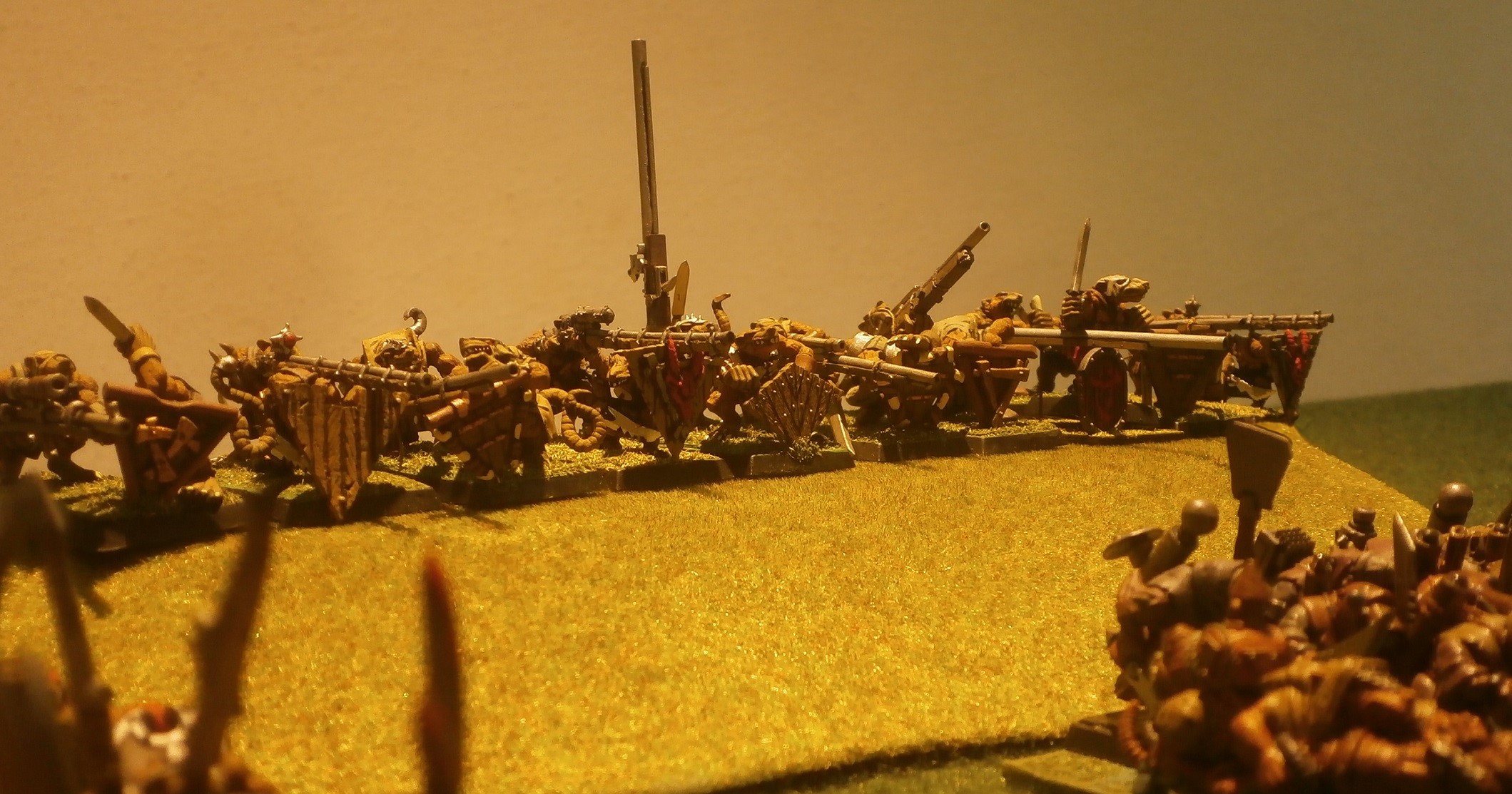
Bernado could only suppose that such extended barrels meant a greater range than ordinary handgunners, and perhaps more powerful shots?
Next in line, came three more of the enemy’s engines, the cannons.

Bernado recognised these, for they had long been employed by the uomini ratto. Unlike his own artillery pieces, they fired not round-shot but murderous lightning. At least one, perhaps two, seemed to be steam-powered, needing no draught animals or slaves, like the maestro’s steam tank.

Looking over to the enemy’s left, Bernado searched the field for the doom-bombard. He had expected it to be in the baggage.

Beyond the three cannons, above and behind a swarm of rats, and on top of another rise in the ground, was a pack of giant rats, being whipped into subservience by several ratmen at the rear.
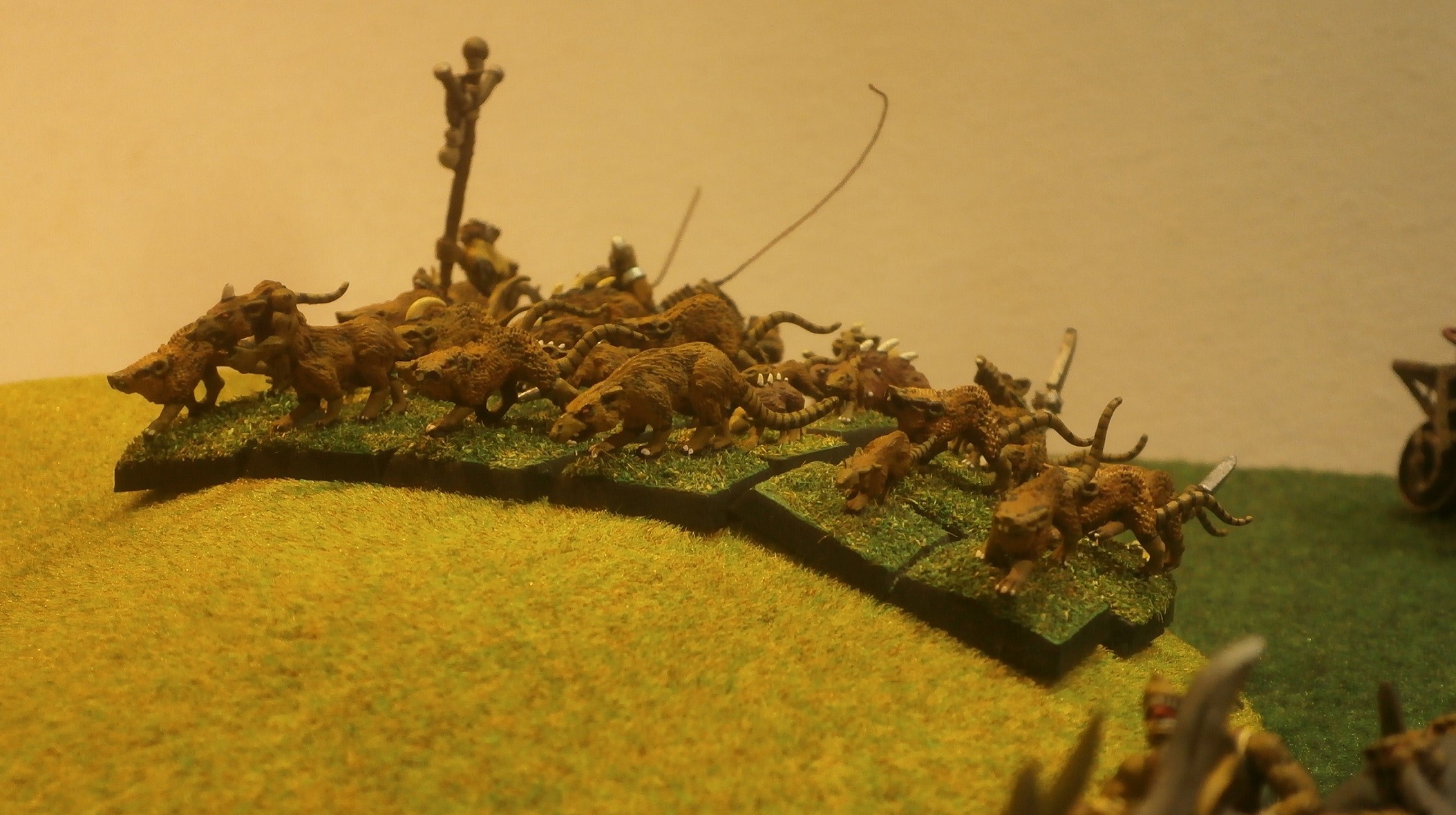
Further out was a massive mob of slaves, the only metal evident upon them being that of their heavy blades and the manacles at their wrists.

Presumably leading them were three commanders, one with a blade and hooked-hand held dramatically aloft, another waving a pistol of strange design.

And, behind the mob, upon the far flank of the enemy’s line, was the terror weapon, unmistakeable with its huge pair of bombard barrels aiming perpendicularly upwards.

‘Why would they put it there,’ Bernado asked himself, ‘where it is less protected? Why was its guard regiment elsewhere in the line?’
Then it occurred to him that the answer could be simple. It was protected, but by the most expendable bodies – the slaves and packrats. Perhaps the foe believed that he and his soldiers would think it madness to approach it at all, considering the potential instability of the grenado it carried? And yet to leave it entirely unprotected was not an option. Thus, the scum of their army was given that duty.
Annoyingly, he knew the dockyard ogres with their pushing poles were on the wrong flank of his army, but thankfully the smashing crew of burly citizen volunteers was not! Hopefully, they could get to the engine and topple it. And by Morr’s grace, he earnestly hoped that in so doing they would immobilize it, and not cause it to explode!
“Pray with me,” he instructed Duarte. “The prayer for protection in battle.”

The two of them then intoned together:
“Sancte Morr, defende nos in proelio, contra nequitiam et insidias hostium esto praesidium.”
…

Urlak surveyed the enemy before him, a little dismayed to see their numbers. He had been led to believe their army was weak after its wars against both ogres and vampires, but what now stood against him did not seem so. He and his masters had worked for many years to foment those wars, hatching a complex series of schemes involving umpteen agents, vast bribes and assassinations. Once this battle was won, he would have to recall who exactly had reported the weakness, and have them flayed.
He was even more concerned that the enemy had chosen to fight. He had fully expected, considering what he had done to Campogrotta, that the Remans would plead for mercy and yield whatever he demanded. Yet here they were, however, in strength, prepared to take the field against him and his doom-bombard.
Perhaps there was a traitor in his army who had passed word to the foe? Perhaps instead Clan Skryre had tricked him and were colluding with the Remans? But no, as his runners came to report the shape of the enemy’s deployment, he knew they were taking the threat seriously, for not only had they arrayed their very best warriors against the engine, there were also elements in their force that indicated an intention to disable it.

Before his eyes, for example, striding among the enemy’s left wing, was a body of oddly armed brutes, for they carried not blades but a brace of long poles terminating in wooden blocks and a huge iron bound club. He had wit enough to realise exactly what they intended to do – to topple the bombard, surely?

More fool them, then, for arriving on the wrong flank, so far from the engine. Unless, he wondered, there was another such body on the enemy’s right flank? Perhaps more ogres, or some other means of disabling it? He could just make their artillery out on that side – a brace of brass-barrelled, heavy cannons atop a hill.
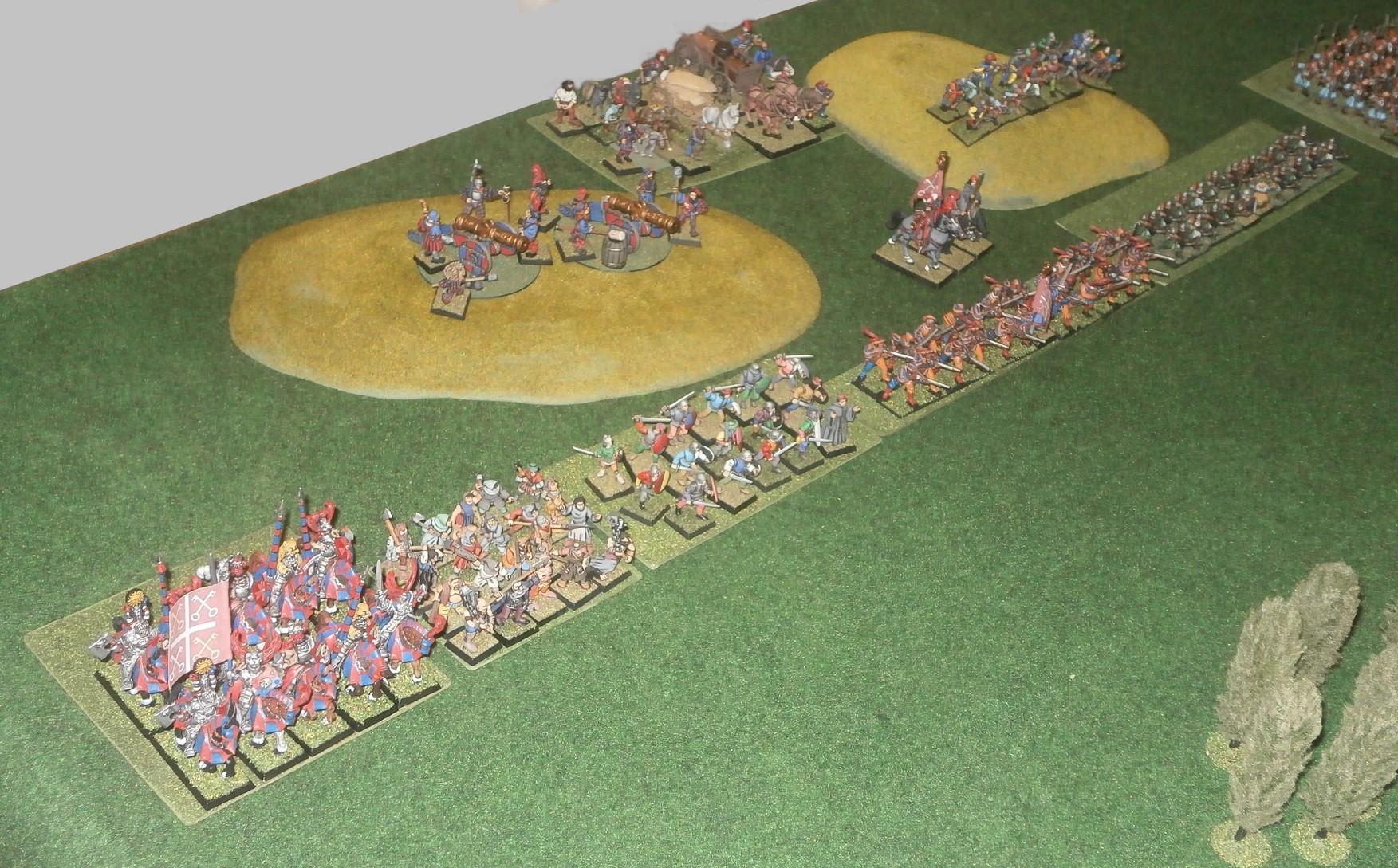
Perhaps those guns intended to fire upon bombard? Yet, he could see their muzzles were currently angled towards the middle of his army.

It seemed most likely that foe would be somewhat trepidatious when it came to the bombard’s destruction? If the maestro was with them, then surely such as he, having learned of the explosion at Campogrotta, would deduce the danger inherent in employing any form of shattering impact against such a bombard?
‘Idiot fool!’ thought Urlak, his lips curling in contempt. ‘He knows nothing.’
Indeed, he now wondered why Clan Skryre wanted the maestro so much, if the man-thing was too stupid to see what was truly what.
His servants described the enemy’s right flank. Furthermost out came the heavily armoured horsemen, the newly formed Knights of Morr he had earlier received reports about.
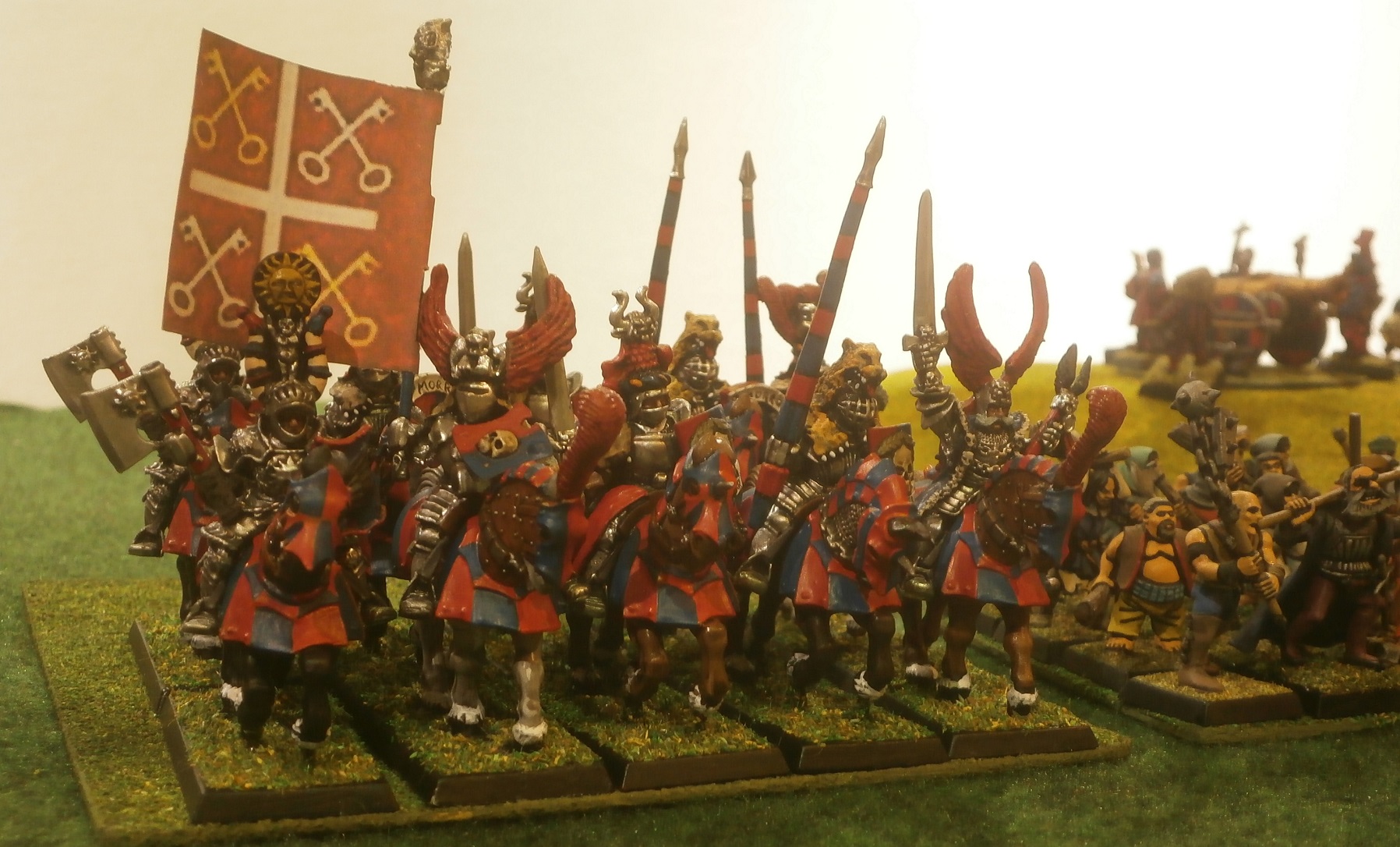
These were meant to be among the finest men-at-arms not just in Remas, or Tilea, but the whole of the western world. Proven warriors who had sworn vows to serve the men-things’ god of death in their latter years, before their strength waned. If the likes of them had been deployed against the bombard, then the foe surely was taking the threat seriously?
‘Let them become caught-entangled in a swamp-mire of slave-scum,’ he cackled to himself.
It did, however, occur to him that the knights might be there quite by accident – after all, the ogres with their pushing poles had been badly misdeployed.
Apparently, there was a body of burly men-things beside the mounted knights, lacking soldiers’ arms and armour. Perhaps, he though, the enemy’s numbers are only so large because they have dragged every fit and able manthing from their city, not just their soldiers?
They had skirmishing swordsmen on that flank too, apparently led by a cloth-clad priest.

He sniggered when he heard this, for what prayers could be used against such cunning as his, against such lies as he was able to weave? Still, bullets and bolts would surely sting, and the enemy had no shortage of them. Not only did they have a large regiment of handgunners in their midst …

… they had crossbowmen galore. Indeed, so many that behind a large company of dwarfen crossbows …

… atop a rise, there was a body of Condotta crossbows able to launch their bolts right over the dwarfs’ heads.
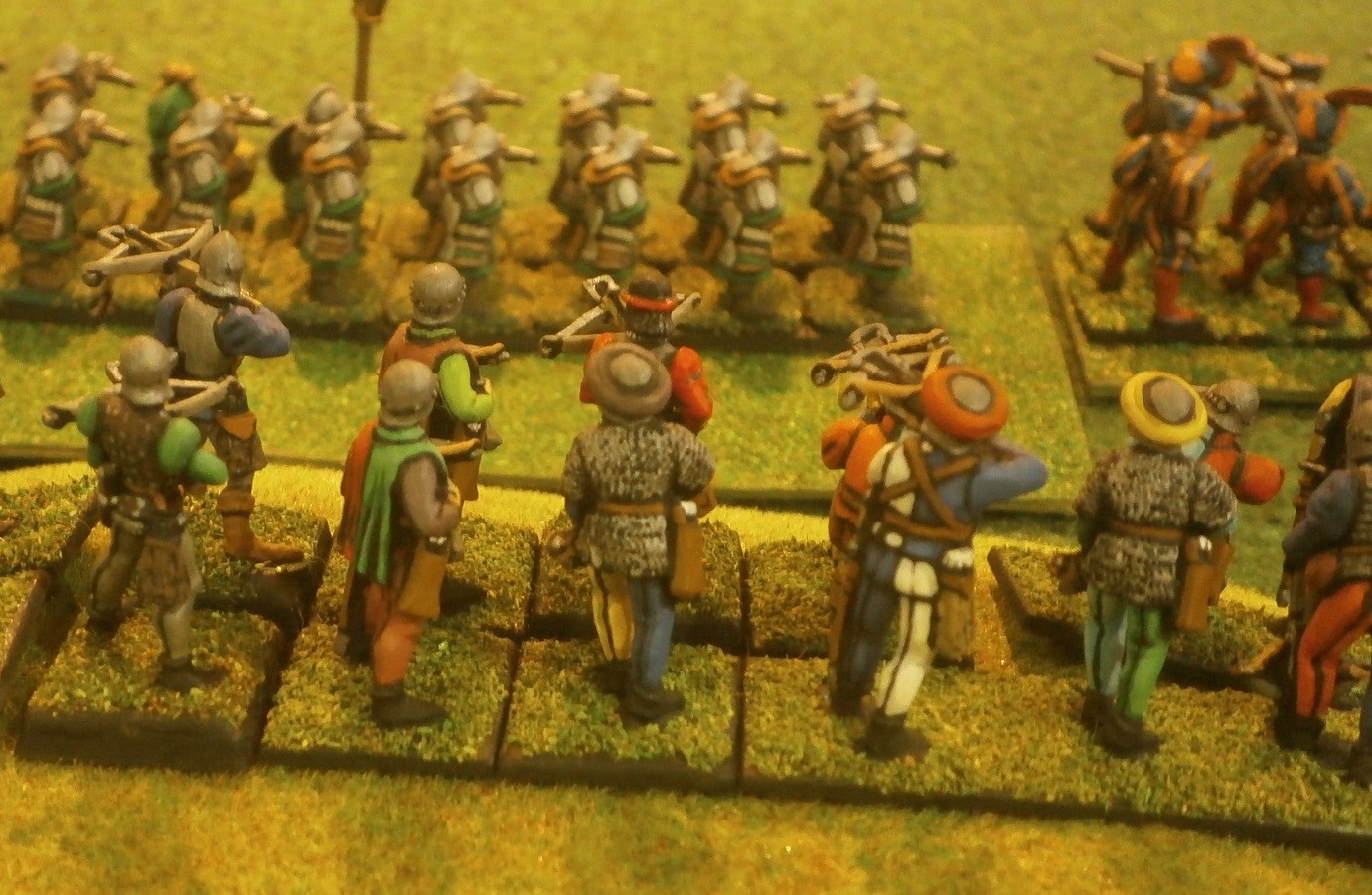
And before his own eyes, he could see more crossbowmen atop another little hill, the famous Cathayan mercenaries by the look of them …
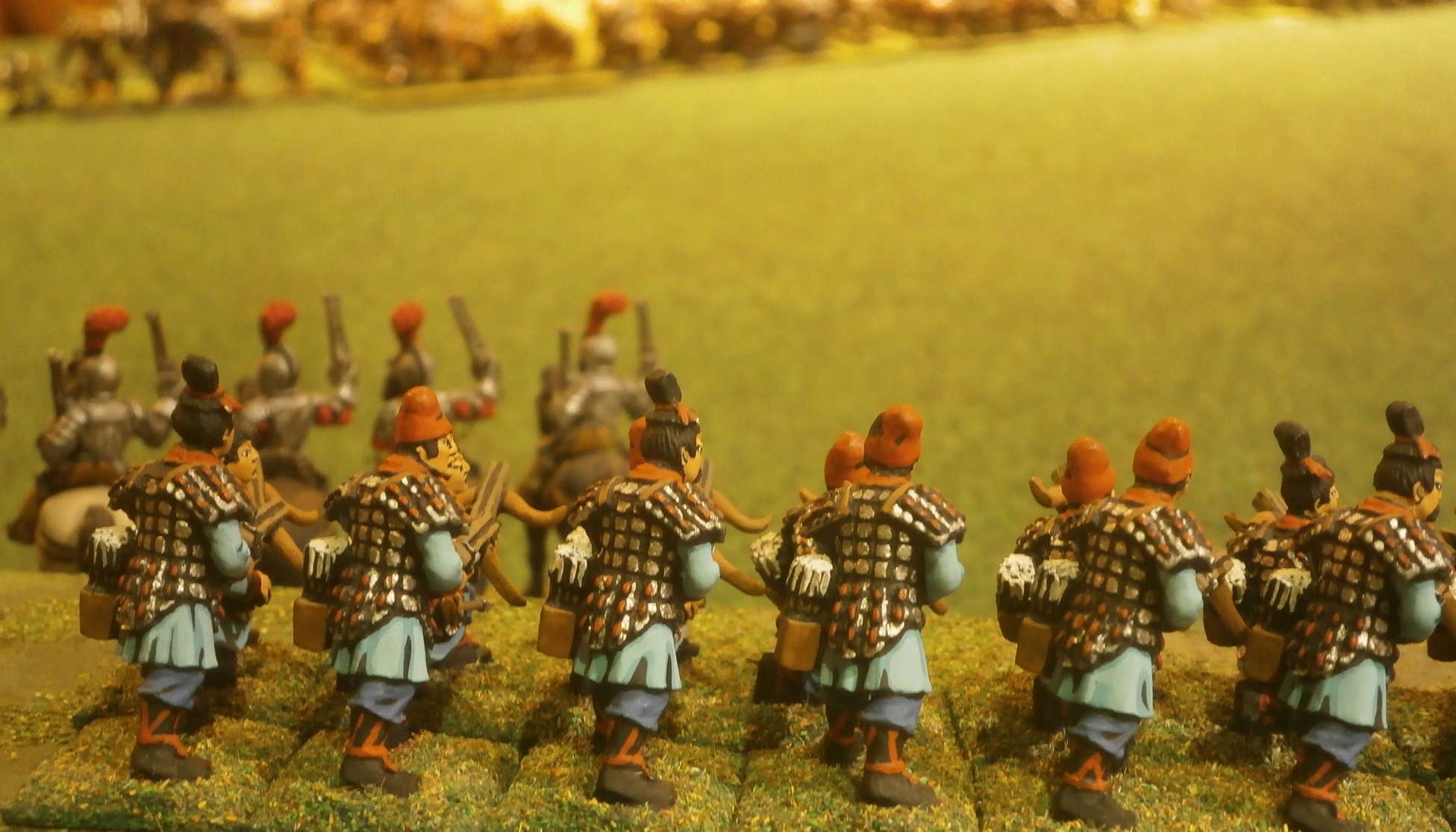
… these able to shoot over the small company of pistoliers trotting up below them.

And, of course, there was the brace of heavy guns, able to fire upon almost every part of the valley.

Urlak knew only too well what such pieces could do to massed ranks. Annoyingly, he also knew that their positioning just beyond the crest of a slope would only make it more difficult for his warplightning cannons to disable them.
Seer-Lord Urlak could see the enemy’s main fighting strength very clearly, for they were to the left of the centre and thus almost immediately before him.

There was another Cathayan regiment, bearing polearms of an unusual kind rather than crossbows like their kin on the hill.
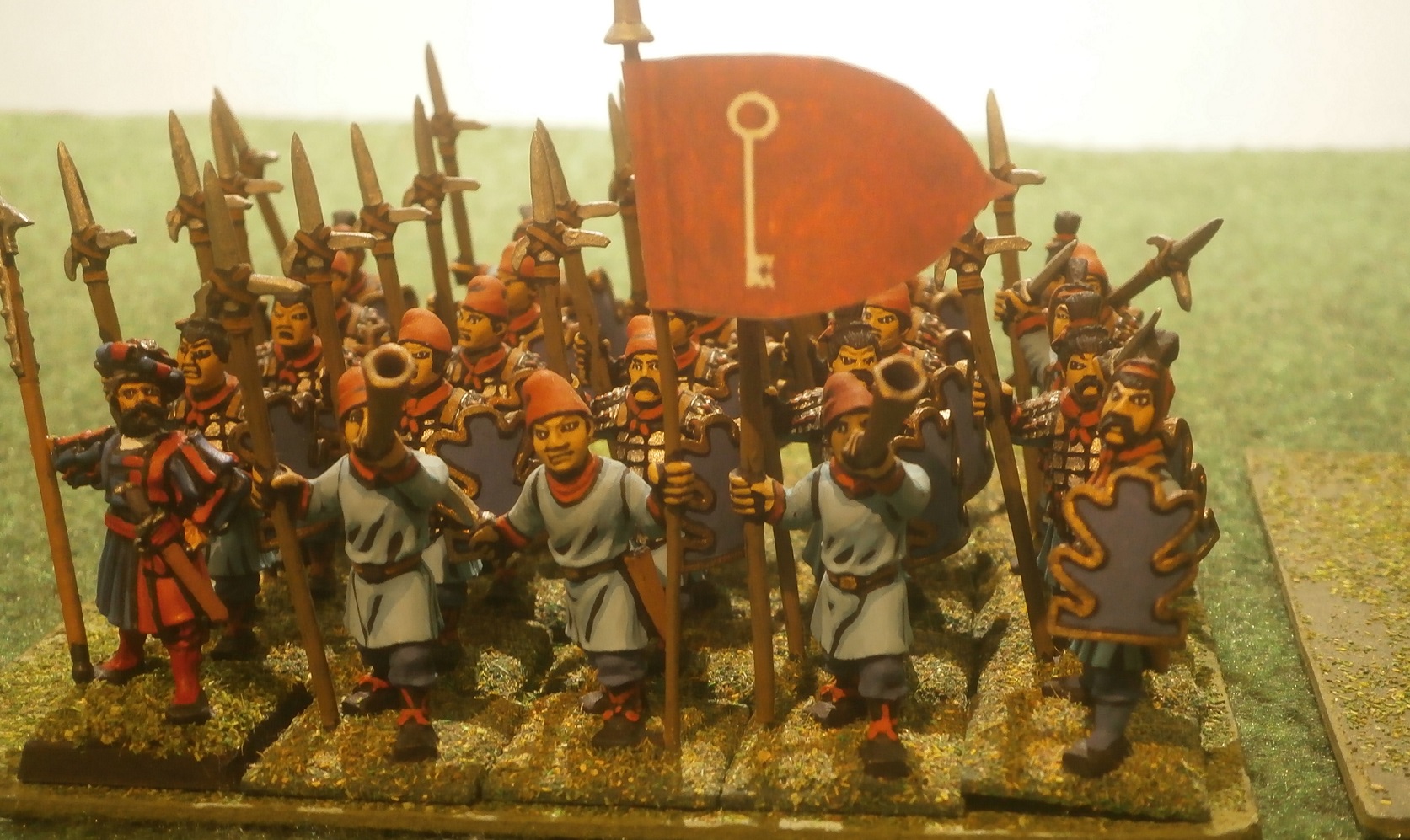
Their standard bore one of Morr’s keys, so they had likely been a long time in Reman service. Unlike most of the other regiments in the enemy’s army, rather than drums they carried horns, the blaring of which sounded pathetic to Urlak’s ears!
A gorgeously liveried regiment of foot-soldiers bore not only their own colours but what was likely the army standard. They bore great swords at the fore, and halberds at the rear.
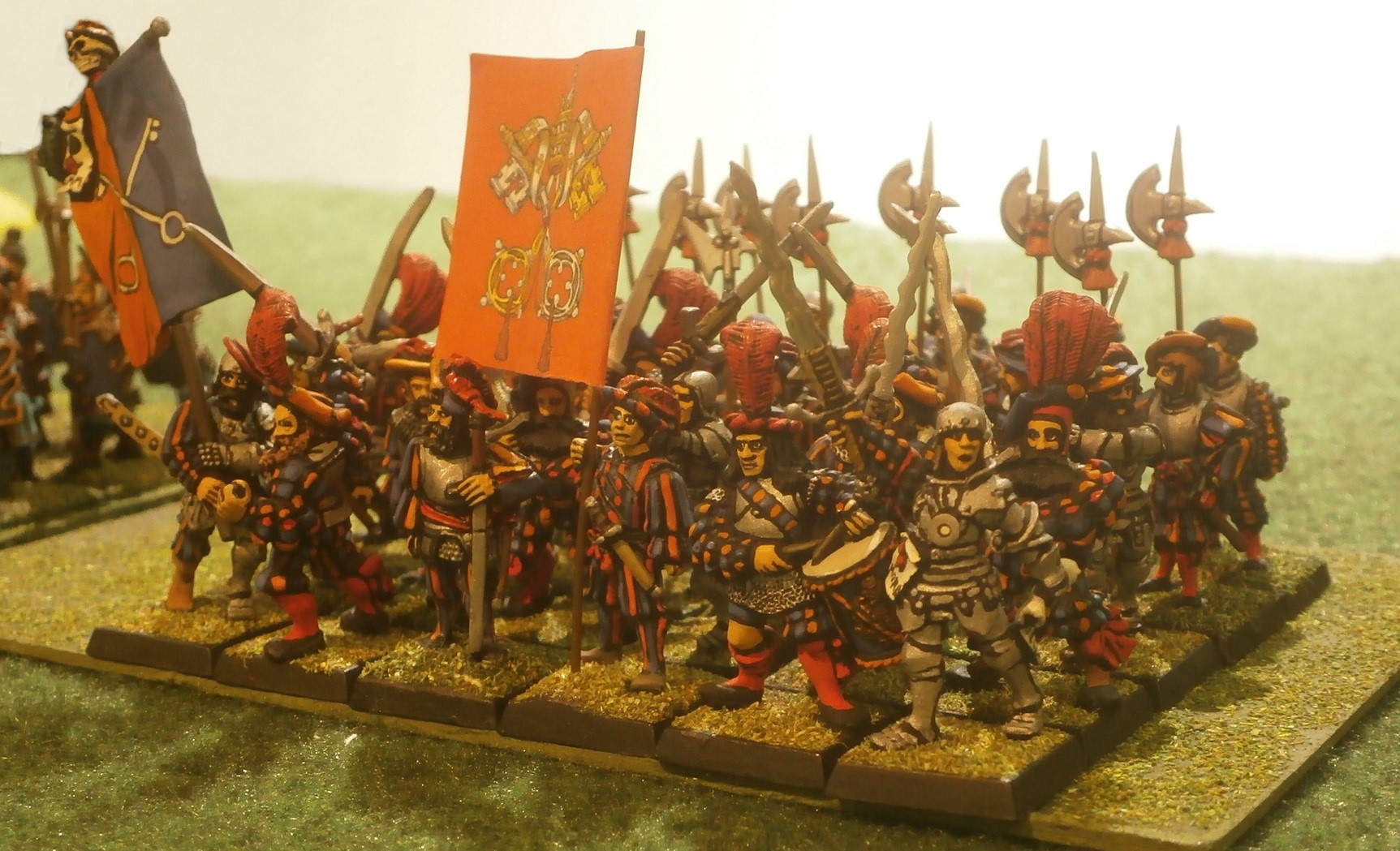
A swaggering, plate-armoured captain commanded them, and even from a distance Urlak believed he could make out fear on the man’s face. Perhaps the fellow was remembering what he had heard about Campogrotta and so contemplating the horror that could engulf the entire valley.
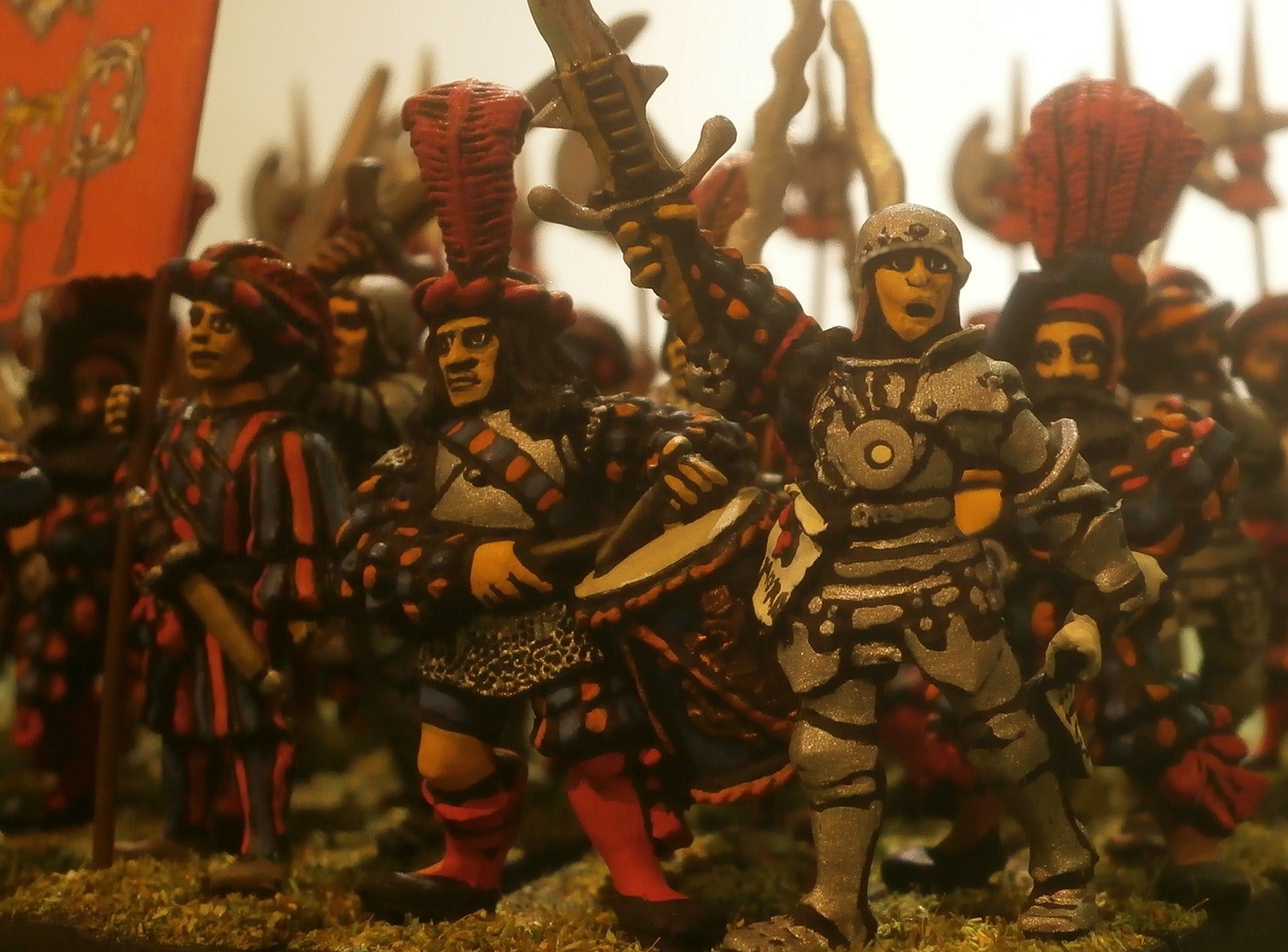
‘Another fool,’ thought Urlak, his eyes narrowing with glee. ‘I have made fools of them all!’
Battle report to follow.
Padre, your work is an absolute inspiration. Bravo! I am completely in terror awaiting the outcome of this unprecedented campaign.
LikeLike